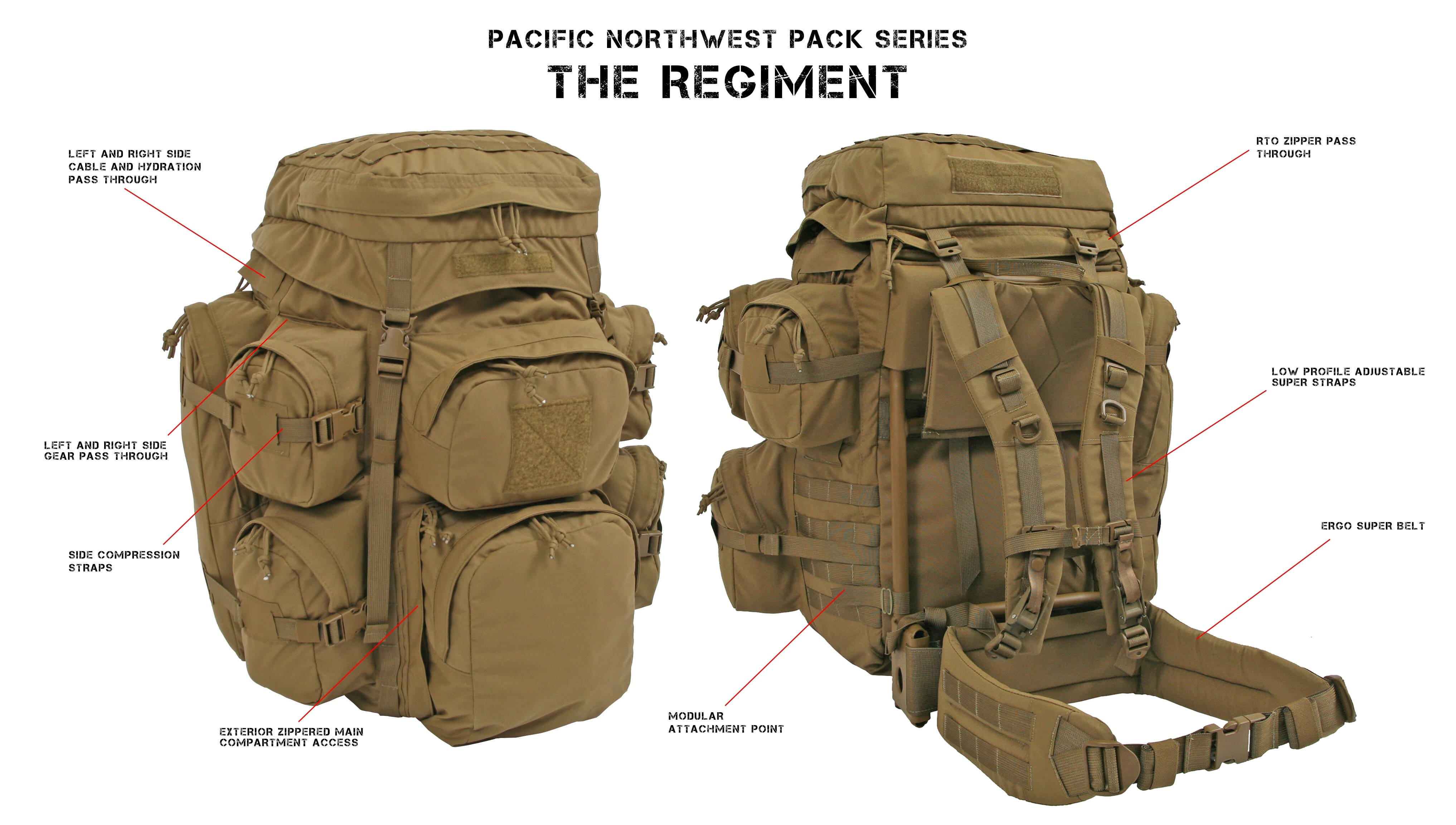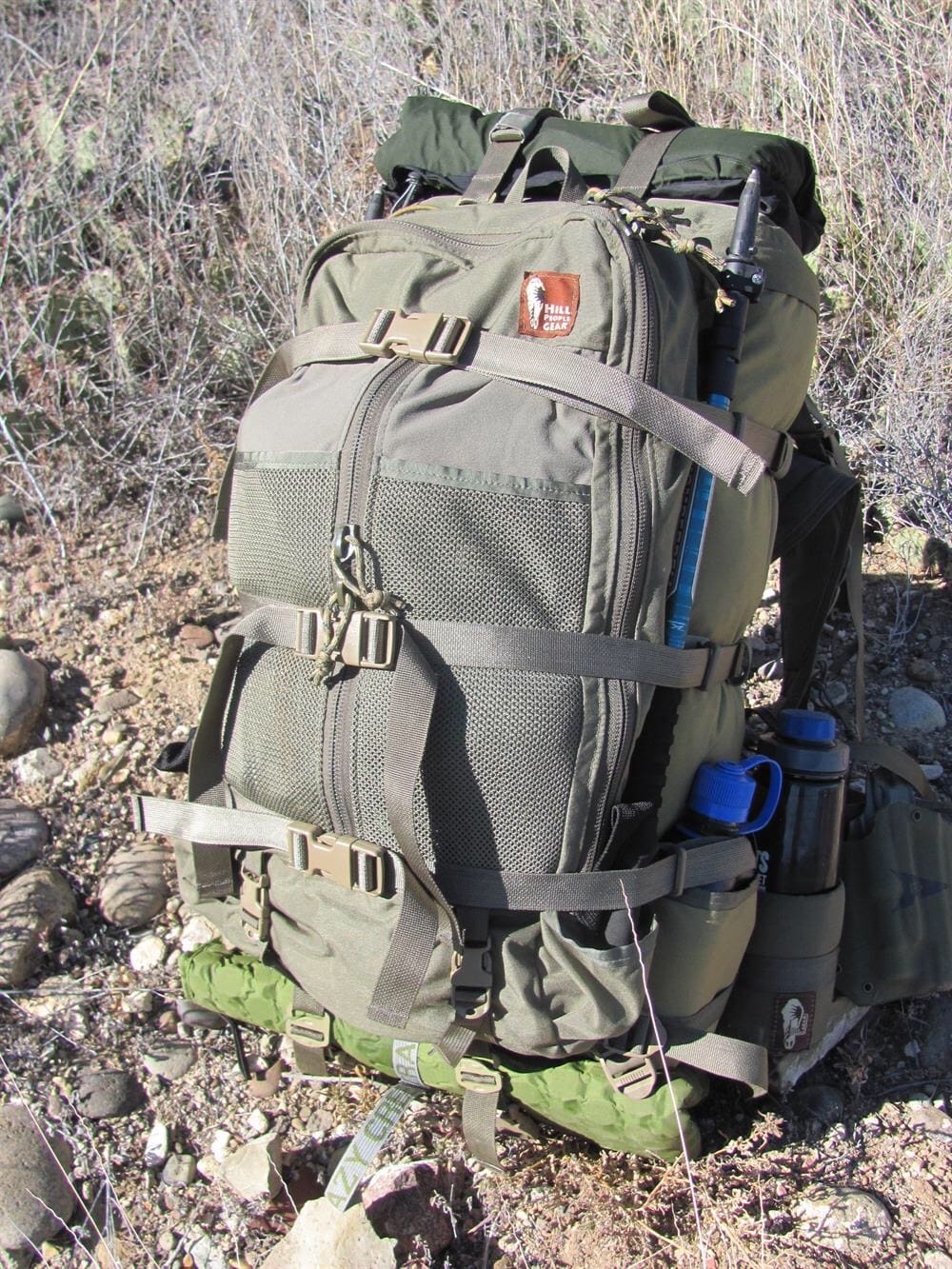We first showed you a hint of the Mountainsmith Roots Collection, during OR Winter Market.
As you can see, these aren’t only great looking bags, they will be available in some SSD reader friendly colors. Coming this Fall.
We first showed you a hint of the Mountainsmith Roots Collection, during OR Winter Market.
As you can see, these aren’t only great looking bags, they will be available in some SSD reader friendly colors. Coming this Fall.
In an effort to continue to evolve and expand on our MAP (Mission Adaptive Panel) System line of gear, LBX has teamed up with the Costa Ludus crew once again to develop a 3-Day MAP pack as an update to the popular Titan pack developed by LBTINC and LBX.
The Titan 2.0 houses a full loop interior for various storage load-outs with the use of the LBX hookpouch inserts, along with a padded storage compartment on the back for the safe stowage of a laptop or tablet with dual zipper access.
The update to the pack now allows you to take advantage of the MAP System and attach different panels to the front of the pack via two 3/4” fast clips and loop.
Available now via LBXTactical.com.
The Ascend Messenger Bag is an ‘office-to-field’ bag built with nylon fabric and YYK hardware, providing a durable and roomy bag. The main compartment features a foam padded section for a primary electronic device, and smaller organizers to keep items separate and protected. The Ascend comes with an on-the-fly closure, which allows for switching from hook and loop to buckle closure, depending on the user’s needs. Additional features include an over-the-shoulder and cross body strap, and a hidden CCW pocket.
The Ascend Messenger Bag comes in Black and Coyote.
I mentioned these new Packable bags from Propper during SHOT Show. The idea is great. The bags can be packed up for carriage and pulled out for use once you get to your destination or used as an extra bag during travel. Not only are they now available, but an SSD reader will win the bag of their choice; either the Backpack or Duffle.
St. Charles, MO – Propper has added to their comprehensive line of packs and bags with their all new Packable Backpack and Packable Duffle. These bags offer great convenience and flexibility. They unpack to be full-sized bags with no compromise on volume. The fabric is water resistant for protection from the elements. Keep one in your vehicle and bring an extra on trips. The compact size makes it easy to always have a bag ready when needed.
Simple to pack and go. Store the Packable Backpack for travel in it’s built-in pouch and quickly unpack when needed. With several separate compartments for organization, this pack is ready when you need it.
-Durable lightweight micro ripstop nylon compresses easily
-DWR (durable water repellent) finish
-Pack stuffs into its own zippered pocket for easy transport or storage
-Two zippered pockets allow for ample storage
-8″ H x 7″ W x 1″ D packed 18″ H x 11″ W x 5″ D unpacked
-100% polyester micro ripstop with DWR black 001, coyote 236, olive 330
The Packable Duffle allows for ample storage when you need it. Simply unpack the duffle from it’s own attached pocket and expand to make room for your gear.
-Durable lightweight micro ripstop nylon compresses easily
-DWR (durable water repellent) finish
-Duffle stuffs into its own zippered pocket for easy transport or storage
-Large main compartment provides storage for large items
-Two smaller side compartments provide additional organization
-8″ H x 7″ W x 1″ D packed 13″ H x 20″ W x 12″ D unpacked
-100% polyester micro ripstop with DWR black 001, coyote 236, olive 330
To Enter:
1. In the comments section of THIS, and only THIS, article on SSD, tell us which bag you’d like to win and the color. Only entries here are eligible to win and dint forget the bag choices are Backpack or Duffle and the colors are Black, Coyote, or Olive.
2. Comments are open from now until 2359 Zulu on 14 April, 2016 (that’s this Thursday).
3. Use any alias you want to post but be sure to use a valid email address since that’s how we’ll contact the winner.
4. 1 lucky winner will be selected at random from the comments we receive.
5. One entry per email address. We will delete entries that violate this policy.
6. Must be 18 to enter. Void where prohibited
The Pacific Northwest Pack Series began as a project to fulfil a solicitation for a suite of SOCOM packs. Our designs for this solicitation were brought about with input from actual SOF soldiers who took these packs to the field throughout the design process and brought back their impressions and recommendations for improvements. We took their advice back to our designers who then continually refined the packs until they met the exacting standards of these elite soldiers.
The Raider pack was designed as an alpine style pack for long range while carrying lighter loads. The Raider stands out in the Pacific Northwest Pack series, as unlike the other packs in the series, it is built with its own internal frame, straps and hip belt with nothing else needed to be ready to go. With a 3100 cubic inch capacity and an empty weight of 5.2 pounds, it truly is a light weight, long range pack.
Just because we designed the Raider as a light weight pack, does not mean we scrimped on the details. This pack is loaded with all the features you would expect from a Tactical Tailor pack. Starting at the top, you’ll find a clamshell style zipper that will let you access the entire contents of your pack. No more digging through your entire pack to find that one missing item. You’ll also find left and right side zippered access to hydration, an RTO zipper pass through and an oversized pocket on both sides for rifle buttstocks, 84mm rounds or just about anything else you can think to strap to the side of this pack. Rounding out the details are a heavy duty carry handle, multiple MOLLE attachment points, integrated load lifters and side compression straps. The Raider is also STRLLS and H Harness compatible for airborne operations.
The Pacific Northwest Pack Series began as a project to fulfil a solicitation for a suite of SOCOM packs. Our designs for this solicitation were brought about with input from actual SOF soldiers who took these packs to the field throughout the design process and brought back their impressions and recommendations for improvements. We took their advice back to our designers who then continually refined the packs until they met the exacting standards of these elite soldiers.

The Regiment pack is a larger rucksack, intended to carry heavy sustainment loads on patrol or reconnaissance. With a total capacity of over 5000 cubic inches, this bag is heavy duty, but at only 5.5 pounds, it is not heavy-weight. Our designers have worked hard to incorporate the most useful features you might need in a long range pack while not wasting your time with useless bells and whistles that only look good as bullet points.
All the standard features are here, like a reinforced carry handle, stainless drain holes on all the exterior pockets, RTO pass-through zipper and side compression straps. Beyond that, you will also find pass throughs on the side pockets for odd sized items like ski poles or shooting sticks, left and right side external zippers for cable or hydration pass through, separate zipper access to the main compartment, internal attachment points for our PRC-117G radio pouch, an air mesh map pocket inside the top flap and much more. The pack is also STRLLS and H harness compatible for airborne operations.
Along with this new line of packs, we’ve also introduced upgrades to our traditional straps and belt in the form of our Low Profile and Low Profile Adjustable Super Straps and Ergo Super Belt. These new designs add even more comfort along with added functionality and adjustability. The Regiment Pack is also available in a discounted kit form which includes the pack, our Fight Light MALICE Pack Frame, Low Profile Adjustable Super Straps and 34” Ergo Super Belt.

The Connor is the successor to HPG’s discontinued Highlander Pack. Although the Connor was designed as an add on pocket (their largest compression pocket, suitable for use on the Ute and larger packs), it can also be used as a stand alone pack when used with a harness.
Features:
-Large main dimensional pocket fully lined with First Spear’s 6/12 PALS cut velcro loop fabric lets you create whatever organizational system you want.
-Center zip outer pocket with stretchy tweave fabric on the outside expands as you stuff it.
-Twin outer mesh pockets on either side of the center zip. Meant for drying your socks on the trail. Sized to take a bike bottle size bottle.
-Hypalon compression wings can be folded underneath for use on the Ute pack or brought around to the front when the Connor is used stand alone. The wings have a 2 channel pals grid cut into them for additional pouches either inside or outside of the wings.
-Dual mini-wand pockets are just big enough to accept bike bottle sized bottle, but excel for smaller items like trekking or fishing poles.
-Generously long bottom compression straps.
-Stay pocket is accessible from the suspension side. Can be used to store other flat items if desired.
-Harness mounting points are midway up the back to allow for a wide range of torso lengths.
-Includes (2) ITW repair ladderloc buckles. In pack mode, they are used for the load lifters. In pocket mode, they can be used on the very bottom tabs to tie into the bottom most compression straps on the Ute pack.
Around 1999 SOCOM started issuing a pack system by Gregory/Bianchi, commercially called the UM21. It was affectionately known by many who used it, as the StrapMaster 2000 for the outrageously long Black 1″ webbing found all over the main pack. Usually issued in Woodland there were a limited number manufactured in 3-Color Desert camo, primarily for 5th Group.
This photo of a burdened mule was taken very early in Operation Enduring Freedom during the so-called Horse Soldier operations. It remains my favorite photo of the UM-21 because one look at the mule’s face and you’ll see how everyone felt while carrying that beast. In fact, you won’t run across many photos of troops actually wearing the Main Pack. Although it did incorporate a few innovative features, the Main Pack was partially manufactured from rubberized fabric and was heavy even when empty. The Main Pack (with PALS compatible side pockets), Patrol Pack and Butt Pack along with 5 stuff sacks made up the system weighing 17 lbs all told.
Although it was fielded as part of the Special Operations Forces Personal Equipment Advanced Requirements (SPEAR) program, it’s design and selection pre-dated the team that fielded such great items as the MICH, MLCS, PCU and SOF Handwear. In fact, it was developed before the Family of Packs was broken out as a separate program from Body Armor/Load Carrying System (BALCS). BALCS ALSO included body armor as well as an Enhanced Load Carrying System subsystems in addition to the UM21.
To learn more, download the UM21 manual.